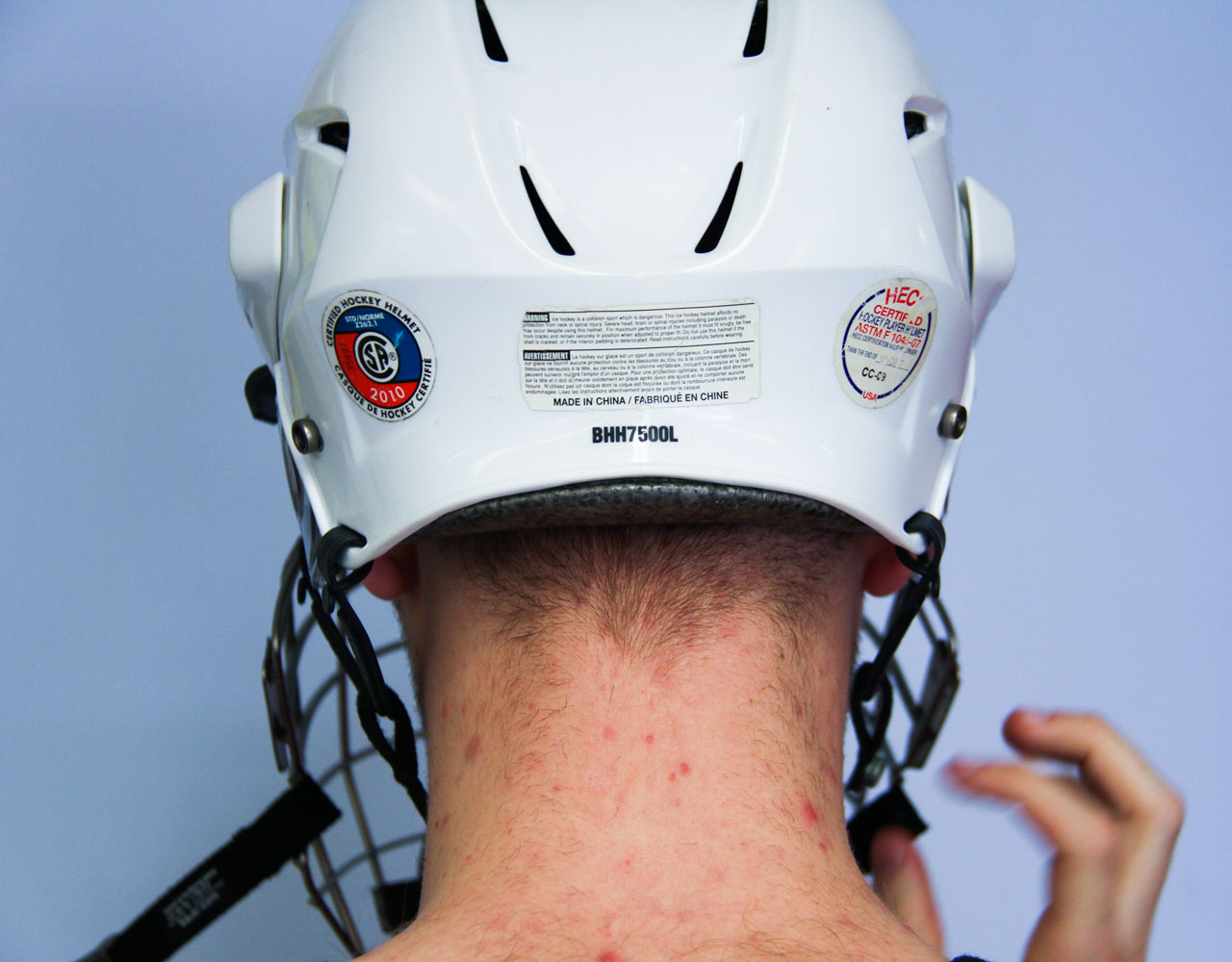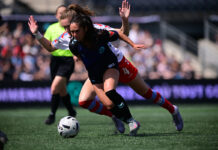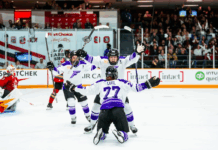Using your head while playing sports may have severe consequences if you don’t use it the right way. For several years now, concussions have become a serious issue in the hockey world, and leagues everywhere are adapting and finding ways to improve player safety.
U Sports is the national managing body of all Canadian university sports, both men’s and women’s, and is currently dealing with the issue of concussions.
“Concussions are essentially a traumatic brain injury and as a result, they should be taken seriously,” said Neill Davidson, a certified athletic therapist for the Carleton University Sports Science Medicine Clinic.
He said one major misconception people have about concussions is a person has to lose consciousness in order to be diagnosed with one, but that is not the case.
“Following a significant force, there is a neurochemical cascade, which occurs as a result of the damage the brain has sustained,” Davidson said. “There is no structural damage to the brain following a concussion, but instead, a disruption in the way it functions.”
Mike McNamee, a former Carleton men’s hockey team player and captain, who now plays in Germany, said that he has suffered from concussions.
“I had a few concussions during my time at Carleton. None of them were too serious, and I was only out for a couple weeks,” he said.
McNamee said the first few days after he received a concussion were scary because every concussion comes with different symptoms.
“For me, daily activities sort of slowed down and became foggy, light and sound became very sensitive as part of the side effects,” he said.
McNamee said he believes not much can be done to necessarily prevent concussions in any hockey league, but agrees teaching players to protect themselves better will help.
“Obviously, the National Hockey League and professional leagues have set a precedent with the spotters they have that watch the game for knocks to the head. If the big leagues are doing it I think it’s something which could and should be used by all leagues grooming players for pro,” McNamee said.
U Sports has begun to take steps to increase awareness about the issue of concussions. According to U Sports rules, any hockey player who fights during the game is ejected and suspended for one game.
“To take a single game out of a 28-game season is pretty huge. In other leagues where there are more games, a one-game suspension does not really give its term,” David Weckworth said, a fourth-year player on the Carleton University’s men’s hockey team.
If a player misses one game out of 28, they miss three per cent of their entire season. If a player were to fight again after receiving the one game suspension, they would then receive a three-game suspension.
Weckworth said he has experienced two concussions while playing major junior hockey. The first concussion he suffered was severe enough to keep him out of hockey for six weeks.
“I don’t really remember what happened, it was one of the scarier injuries because of the symptoms I felt,” he said.
Weckworth said he gives Carleton’s medical staff praise because they are stricter about concussion protocol then other leagues he has played in.
“The way the medical staff handles it here is much different then how they handled it in junior. The medical staff’s awareness is second to none here. We have doctors, physiotherapists, and professional staff working with us every day,” he said.
Weckworth added that when there is significant head contact during a game, the medical staff will remove the player from the game, and in most cases re-evaluation takes a week.
“The doctors and medical staff obviously want us to get back playing hockey, but first and foremost they want us to be healthy, functioning individuals,” Weckworth said.
The women’s hockey league in U Sports is non-contact, while the men’s remains full contact, yet concussions are a very real danger in the women’s league. For example, during a puck battle drill in training camp this season, two players on Carleton’s women’s hockey team collided and suffered concussions before the season had even begun.
“Compared to men’s hockey, there is not a lot of contact because they can just full-out hit someone on the ice without being called, but for sure, there is contact in women’s hockey, just not as much as men’s,” Nieve Seeley, a back-up goalie for the women’s Carleton Ravens hockey team said.
She was recently diagnosed with a concussion while playing for the Ravens in early November. Seeley stopped a one-time slap shot to the helmet, and after the practice, she began showing signs of a concussion, and was later diagnosed by the medical staff.
“I told the medical staff that I was fine at first, so I did not get any treatment right away because nobody saw me get hit with the puck to the head, but on the bus I started showing symptoms,” Seeley said.
She is currently receiving treatment from team doctors and physiotherapists at Carleton.
“The treatment is really good at Carleton. As soon as I started to get sick to my stomach and feel dizzy, the medical staff acted very quickly,” she said.
The symptoms of concussions can have both short and long term remifications affecting the injured players brain.
“It is not just about hockey. It is about their lives and life after hockey. Sometimes when you get a really bad concussion you cannot go to school,” Pierre Alain, head coach of the Carleton Ravens women’s hockey team, said.
Despite the best efforts of medical staff and the evolving rules in U Sports, it is impossible for the league to be concussion free.
Graham Brown, the commissioner of U Sports has never considered banning contact in university men’s hockey, but has begun to look at other sports within the league where concussion issues are on the rise. According to the government of Canada’s webpage focusing on concussions, “football, soccer and hockey have all shown a greater than 40 per cent increase in rates of reported head injury (relative to other injuries) between 2004 and 2014 for children and youth.”
“One area of sport which we are assessing right now is women’s basketball because they have had the highest amount of concussions within U Sports,” Brown said.
At the same time, U Sports is rapidly adapting and upgrading its concussion protocol for all hockey players who have suffered a severe blow to the head.
If a player is believed to have suffered a concussion, the medical staff will evaluate the player based on memory tests, spine assessments, and if he or she is having a severe headache, vomiting, or experiencing double vision.
Carleton’s medical staff has also introduced a new computer-based test evaluation in order to evaluate a concussion victim more accurately.
“The computer-based concussion evaluation checks the player’s memory and reaction time. Most professional athletic organizations are now using them,” Davidson said.
He said the athlete must complete the test and must pass it in order to begin practicing again.
“It is very important to reassure the athlete they will be alright. It is too easy to get wrapped up in all the hype with how much attention this issue has been given,” Davidson said. “I feel we have started placing an overly drastic label which may be negatively impacting or exacerbating some of the psychological symptoms [of concussions].”
He added that developing a strong support system throughout this process can make a big difference in the player’s rehabilitation.
Davidson said the best way to protect against concussions in hockey is to educate the athletes on the signs, symptoms, risk reductions and implications of concussions.
“The only way to prevent concussions is to not play hockey . . . The words ‘prevention’ and ‘concussions’ do not really go together in any form of hockey,” said Brown. “Preventing them is not happening.”
Photo by Meagan Casalino






